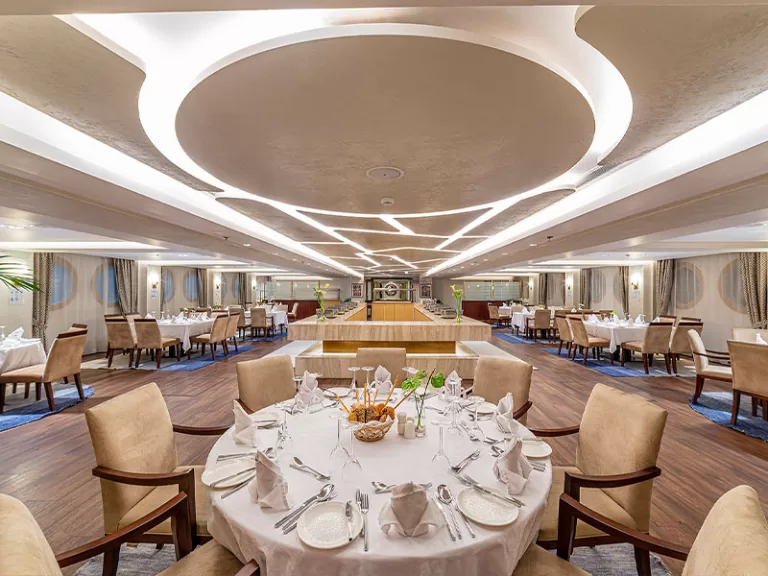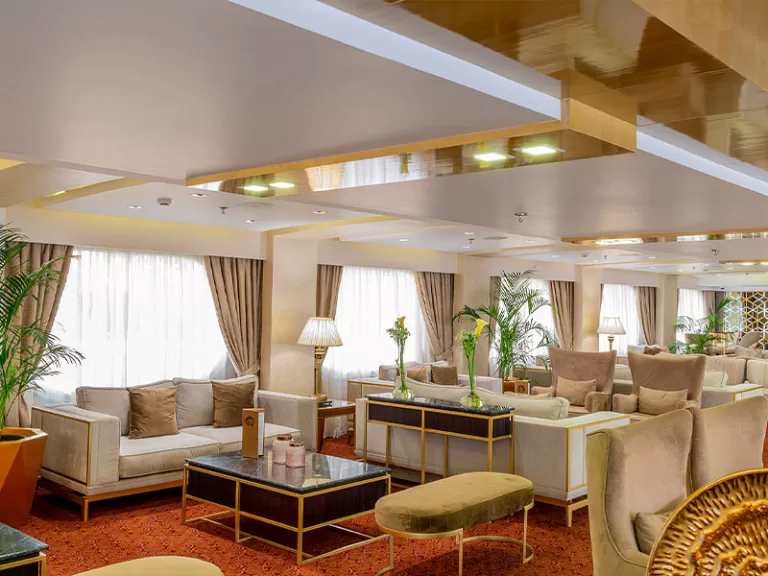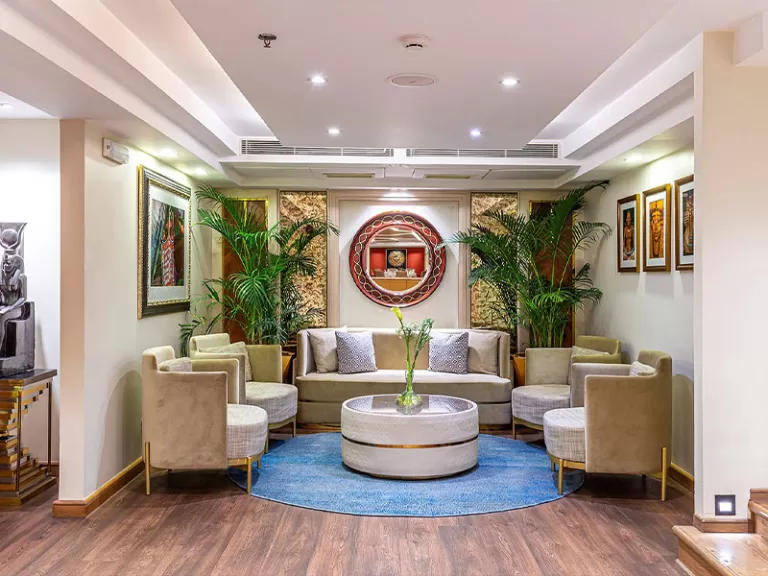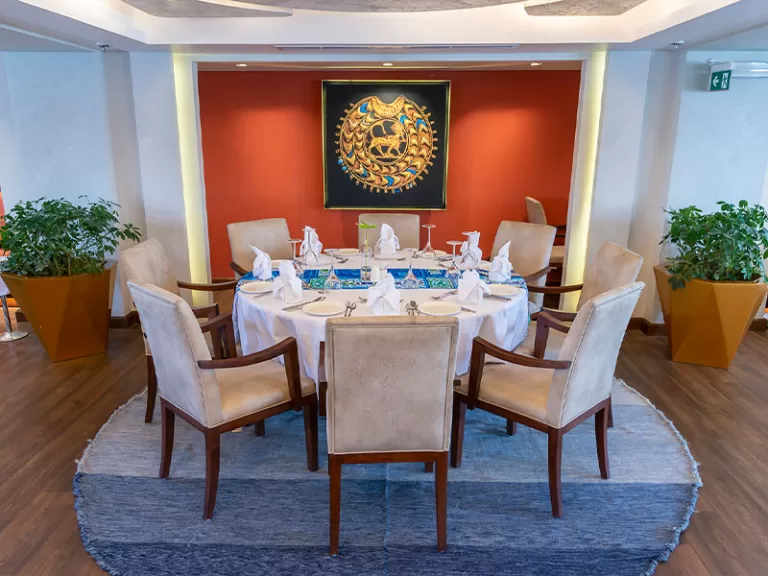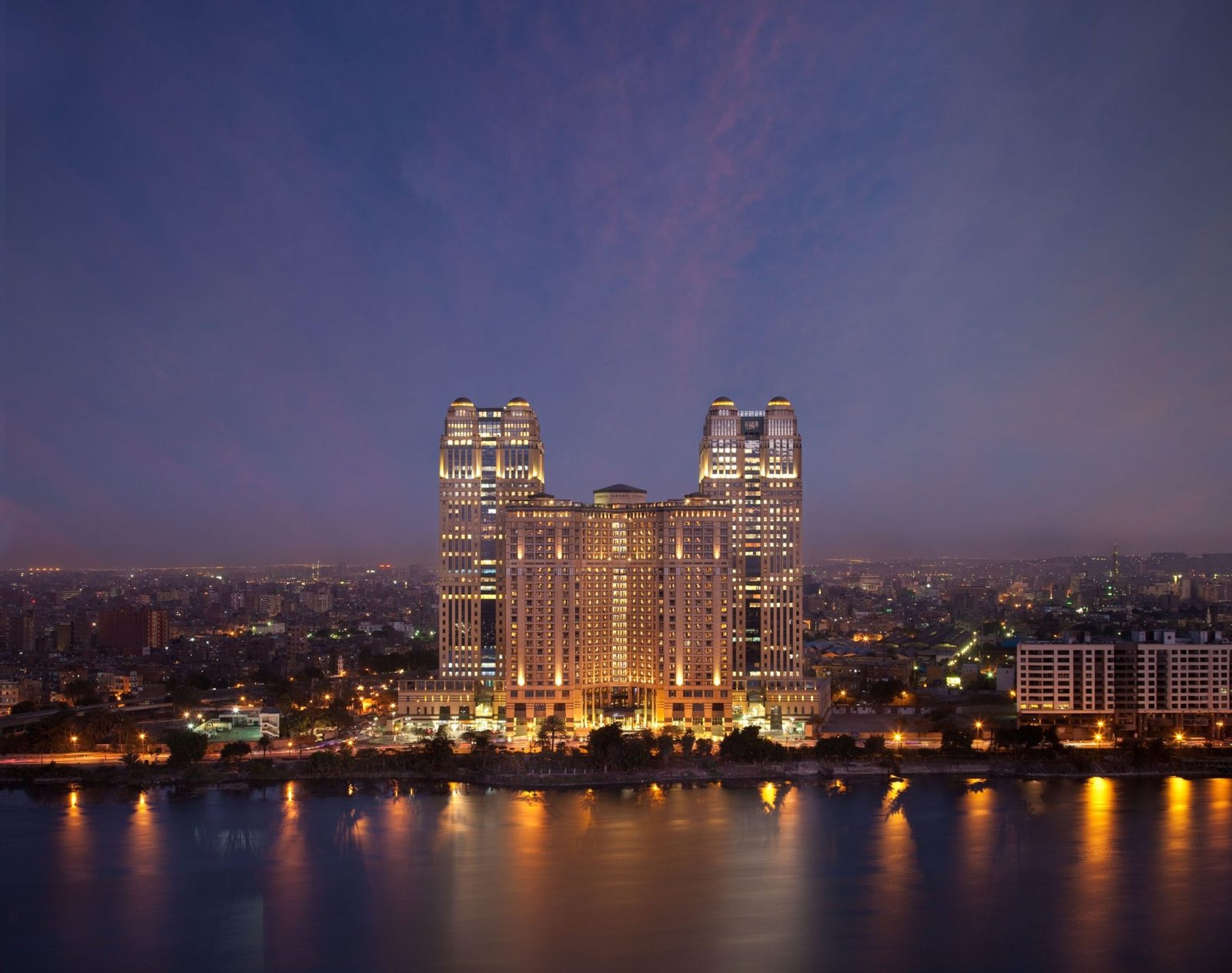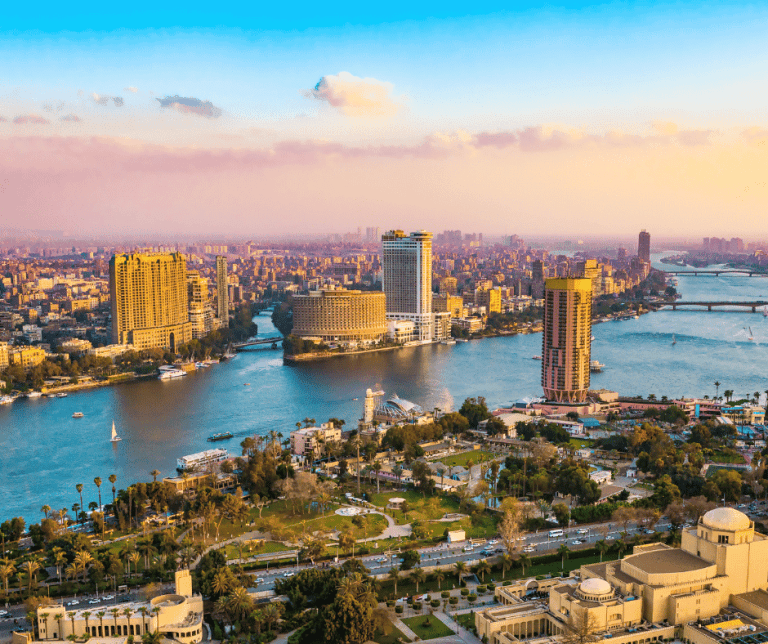
Home » Weekly Blog » From Pharaohs to Modern Marvels: Unveiling Cairo’s Hidden Gems with Ancient Navigator
From Pharaohs to Modern Marvels: Unveiling Cairo’s Hidden Gems with Ancient Navigator
Table of Contents
Introduction
Cairo, the beating heart of Egypt, is a city where the sands of time weave an intricate tapestry of history and modernity. From the echoing footsteps of pharaohs to the vibrant pulse of a modern metropolis, Cairo is a city of contrasts, where ancient treasures lie nestled amid bustling urban life. For travelers seeking to go beyond the well-trodden paths, the city offers a trove of hidden gems—places steeped in mystery and beauty, waiting to be discovered.
As you wander through Cairo’s labyrinthine streets, you might be drawn to the awe-inspiring Giza Pyramids or the enigmatic Sphinx. But there’s so much more to this sprawling city than its iconic landmarks. This guide, crafted with the adventurous spirit of an ancient navigator, aims to lead you off the beaten path. We’ll uncover lesser-known spots where history and modernity blend seamlessly, revealing a side of Cairo that is as enchanting as it is unexpected.
Whether you’re a history buff, a lover of art and culture, or a culinary explorer, Cairo’s hidden gems promise a rich and diverse experience. From the ancient marketplaces echoing with tales of yore to contemporary art scenes bursting with color and innovation, this city has something for every curious soul. Join us on this journey as we delve into the depths of Cairo, exploring its secret treasures and uncovering stories that have shaped its unique identity.
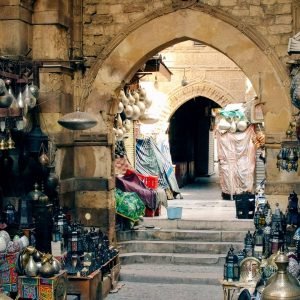
The Timeless Charm of Cairo’s Historical Sites
Cairo’s history stretches back thousands of years, offering a rich tapestry of stories and architectural marvels that tell tales of ancient civilizations. While the Pyramids and the Sphinx often steal the spotlight, the city is brimming with lesser-known historical sites that capture the imagination and offer a glimpse into a bygone era. Let’s embark on a journey through Cairo’s hidden historical gems, where the echoes of the past still resonate.
Khan El Khalili Bazaar
Imagine stepping into a labyrinthine market where the scents of exotic spices mingle with the sounds of artisans hammering away at copper and brass. Welcome to Khan El Khalili Bazaar, a bustling marketplace that has been the heart of Cairo’s trade and commerce for centuries. While the bazaar itself is well-known, the true magic lies in its hidden corners.
Wander off the main tourist trails, and you’ll find small, tucked-away stalls where master craftsmen ply their trade. Here, you can witness the age-old art of goldsmithing or watch a weaver create intricate carpets. The bazaar’s alleyways also hide tiny workshops where artisans produce traditional Egyptian crafts like glass-blown perfume bottles and intricately designed lanterns. These hidden gems offer a more intimate experience, away from the hustle and bustle, allowing you to connect with Cairo’s rich artisanal heritage.
Al-Azhar Park
A verdant oasis in the midst of Cairo’s urban sprawl, Al-Azhar Park is a haven of tranquility with stunning views of the city’s skyline. But what many visitors don’t know is the fascinating history behind its creation. Once a mountain of rubble, the area was transformed into a lush park thanks to a project initiated by the Aga Khan Trust for Culture. This remarkable transformation not only provided much-needed green space for the city’s residents but also uncovered a part of Cairo’s forgotten past.
As you stroll through the park’s beautifully landscaped gardens, take a moment to explore the lesser-known historical sites within its grounds. The restored 12th-century Ayyubid wall is a testament to Cairo’s medieval history, while the charming terraces offer hidden spots to relax and enjoy panoramic views of the city’s historic skyline. Whether you’re sipping tea at the park’s café or exploring its architectural features, Al-Azhar Park provides a unique blend of history and natural beauty.
The Nilometer on Roda Island
Nestled on Roda Island in the Nile, the Nilometer is a remarkable piece of ancient engineering that once played a crucial role in Egyptian society. Built during the Abbasid era in 861 AD, this ancient structure was used to measure the Nile’s water levels, which were vital for predicting the success of the annual agricultural season. The Nilometer’s readings determined everything from tax rates to agricultural planning, making it a cornerstone of ancient Egyptian life.
While many tourists overlook this unassuming structure, those who visit are rewarded with a fascinating glimpse into Egypt’s agricultural history. The Nilometer’s octagonal shaft, adorned with inscriptions and geometric patterns, is an architectural marvel. As you descend into the cool, stone-lined chamber, you can almost feel the weight of history in the air. It’s a quiet, contemplative space that offers a rare insight into the practical aspects of ancient Egyptian civilization.
The Hanging Church
Tucked away in the heart of Old Cairo, the Hanging Church, or Al-Muallaqa, is one of the oldest Christian places of worship in Egypt. Built on top of the southern gate of the Babylon Fortress, the church gets its name because it appears to be “hanging” above the ground. This unique architectural feature is not only a testament to the ingenuity of early Christian builders but also to the resilience of Cairo’s Coptic community.
As you enter the church, you’re greeted by a stunning interior adorned with intricate woodwork, beautiful icons, and a serene atmosphere. But the real hidden gems lie in the church’s lesser-known details. Look closely at the ancient wooden screens, which are masterpieces of craftsmanship, or the marble pulpit with its elegant carvings. The church also houses a small museum with rare Coptic artifacts, providing a deeper understanding of Egypt’s Christian heritage.
These historical sites offer more than just a glimpse into Cairo’s past; they are living, breathing parts of the city’s identity. Each location tells a unique story, woven into the fabric of Cairo’s rich cultural tapestry. As you explore these hidden gems, you’ll uncover layers of history that enrich your understanding of this timeless city. Whether you’re marveling at ancient engineering feats or admiring centuries-old craftsmanship, Cairo’s historical hidden gems offer a journey through time like no other.
Cairo's Modern Marvels
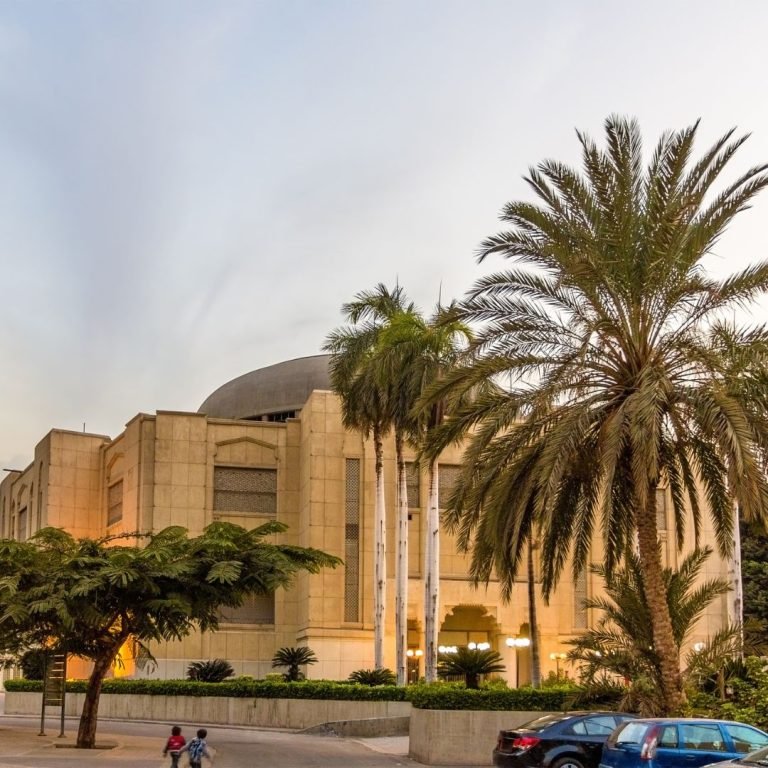
While Cairo is renowned for its ancient wonders, it’s also a city that pulses with modern energy and creativity. Beyond its historic mosques and pharaonic relics, Cairo boasts a vibrant array of contemporary attractions that reflect the city’s evolving identity. In this section, we’ll explore some of Cairo’s modern marvels, from cultural institutions to chic neighborhoods, showcasing how this ancient city embraces the present while honoring its past.
The Cairo Opera House
A beacon of art and culture, the Cairo Opera House stands as a testament to Egypt’s commitment to the arts. Opened in 1988, this architectural masterpiece is the premier venue for classical music, ballet, opera, and theater in Egypt. The Opera House complex is a cultural oasis, featuring several halls, an open-air theater, and art galleries that host exhibitions from both local and international artists.
For those seeking a deeper experience, the Opera House offers behind-the-scenes tours that reveal the inner workings of this grand institution. You can explore the rehearsal studios where dancers and musicians perfect their craft or visit the costume and set design workshops where the magic of stage productions comes to life. Additionally, the Opera House frequently hosts lesser-known performances, such as contemporary Egyptian plays or experimental dance shows, offering a rich and diverse cultural palette that goes beyond the classical repertoire.
The Zamalek District
Situated on Gezira Island in the Nile, the Zamalek district is a microcosm of modern Cairo’s cosmopolitan vibe. Known for its leafy streets, upscale boutiques, and vibrant dining scene, Zamalek offers a refreshing contrast to the city’s more traditional neighborhoods. This area is a melting pot of cultures, where embassies and cultural centers coexist with trendy cafes and art galleries.
One of Zamalek’s hidden gems is its thriving art scene. The district is dotted with small, independent galleries showcasing contemporary Egyptian art. Places like the Zamalek Art Gallery and Safarkhan offer a window into the dynamic world of modern Egyptian artists, featuring everything from abstract paintings to cutting-edge installations. Meanwhile, the district’s cafes, such as the charming Café Riche, serve as informal cultural hubs where artists, writers, and intellectuals gather, creating a vibrant cultural atmosphere that is uniquely Zamalek.
Cairo’s Street Art Scene
Cairo’s streets have become an open-air gallery, where walls and buildings are adorned with colorful murals and graffiti. The city’s street art scene is a powerful medium of expression, often reflecting the social and political currents of the times. This modern art form has flourished particularly since the 2011 revolution, with artists using public spaces to communicate messages of hope, resistance, and identity.
One of the most iconic areas for street art in Cairo is the district of Downtown, particularly around Tahrir Square. Here, you can find a variety of works, from large-scale murals to smaller, intricate pieces. Notable artists like Alaa Awad and Keizer have made significant contributions to the scene, each bringing their own unique style and perspective. For a more immersive experience, consider taking a street art tour, where knowledgeable guides can provide context and background to the artworks, deepening your understanding of this vibrant aspect of Cairo’s modern culture.
The New Grand Egyptian Museum
Set to be one of the largest archaeological museums in the world, the Grand Egyptian Museum (GEM) is a modern marvel that promises to be a treasure trove of ancient artifacts. Located just two kilometers from the Giza Pyramids, the museum’s design seamlessly blends with the surrounding landscape, offering breathtaking views of the iconic pyramids from its expansive glass façade.
While the museum is best known for housing the full collection of Tutankhamun’s treasures, it also boasts numerous special collections and temporary exhibitions that highlight lesser-known aspects of Egyptian history. The museum’s cutting-edge technology, including virtual reality experiences and interactive displays, offers visitors an engaging way to explore Egypt’s rich heritage. With its anticipated opening, GEM is set to become a cultural landmark that bridges the gap between Cairo’s ancient past and its innovative present.
Cairo’s modern marvels showcase a city that is as dynamic as it is diverse. Whether you’re immersing yourself in the arts at the Opera House, exploring the cosmopolitan streets of Zamalek, admiring vibrant street art, or anticipating the treasures of the Grand Egyptian Museum, there’s a modern aspect of Cairo waiting to be discovered. These contemporary attractions not only highlight the city’s evolving cultural landscape but also offer new ways to experience Cairo’s enduring allure.

Culinary Delights and Cultural Experiences
Cairo is a city that tantalizes all the senses, and its culinary scene and cultural experiences are no exception. Beyond the pharaonic wonders and modern attractions, Cairo offers a rich tapestry of flavors and traditions that reflect its diverse heritage. In this section, we’ll explore the city’s hidden culinary gems and cultural experiences that provide a deeper connection to the life and soul of Cairo.
Authentic Egyptian Cuisine
Egyptian cuisine is a delightful blend of Middle Eastern, Mediterranean, and African influences, offering a variety of dishes that cater to all tastes. While well-known dishes like koshari and falafel are must-tries, the true essence of Cairo’s culinary landscape lies in its hidden eateries and street food stalls.
One such gem is El Prince, a local favorite tucked away in the Imbaba district. Known for its hearty portions and authentic dishes, El Prince offers a taste of traditional Egyptian fare, such as molokhia (a green, leafy soup) and fattah (a dish of rice, meat, and crispy bread, topped with garlic and tomato sauce). The unassuming setting and warm hospitality make dining here a truly local experience.
For street food enthusiasts, a visit to Zooba is a must. This contemporary eatery puts a modern twist on classic Egyptian street food, offering dishes like taameya (Egyptian falafel made with fava beans) and hawawshi (spiced minced meat in bread). Zooba’s vibrant interiors and innovative menu provide a fresh take on traditional flavors, making it a popular spot among both locals and visitors.
Another culinary treasure is Abou El Sid, a restaurant that exudes old-world charm with its vintage decor and traditional recipes. Located in Zamalek, this restaurant offers a nostalgic dining experience, serving up dishes like mahshi (stuffed vegetables) and pigeon stuffed with freekeh. Abou El Sid is perfect for those looking to immerse themselves in the rich culinary traditions of Egypt, complete with an atmospheric setting that transports you to a different era.
Cultural Festivals and Events
Cairo’s cultural scene is as vibrant and diverse as its culinary offerings, with a calendar filled with festivals and events that celebrate the city’s heritage and contemporary culture. These events provide a unique opportunity to experience Cairo’s artistic and cultural diversity, often featuring local talents and traditions that aren’t widely known.
One of the city’s most cherished events is the Cairo International Film Festival (CIFF). Held annually, CIFF is one of the oldest film festivals in the Arab world, showcasing a wide range of international and local films. It’s a platform for Egyptian filmmakers to present their work alongside international cinema, offering a unique insight into the country’s film industry. The festival also includes workshops, panel discussions, and special screenings, making it a comprehensive cultural experience for film enthusiasts.
For those interested in traditional music, the Cairo Opera House hosts the Arab Music Festival, a celebration of classical Arabic music that attracts artists from across the region. This festival is a rare opportunity to hear traditional Arabic instruments and vocal styles, offering a deep dive into the musical heritage of the Arab world.
Another hidden cultural gem is the Darb 1718, a contemporary art and culture center located in Old Cairo. Darb 1718 frequently hosts art exhibitions, theater performances, and music concerts, providing a platform for emerging Egyptian artists. The center also offers workshops and cultural programs, allowing visitors to engage directly with Cairo’s vibrant art scene.
Local Craftsmanship and Souvenirs
Cairo is a city of artisans, where traditional crafts have been passed down through generations. From intricate jewelry to beautifully woven textiles, the city’s markets and workshops are treasure troves of handmade goods that offer a unique glimpse into Egypt’s artisanal heritage.
In the heart of Cairo’s Islamic district, the Tentmakers’ Bazaar is a hidden gem for those interested in traditional Egyptian textiles. This small, covered market is home to artisans who create stunning appliqué work, known as “khayamiya.” These colorful textiles, often used as decorative tents or wall hangings, feature intricate patterns and vibrant colors. Visitors can watch the craftsmen at work and purchase one-of-a-kind pieces, making it a perfect place to find unique souvenirs.
For jewelry lovers, a visit to the Muizz Street area is a must. This historic street is lined with shops selling silver, gold, and semi-precious stone jewelry. One of the standout shops is Azza Fahmy, a renowned Egyptian jewelry designer known for her handcrafted pieces inspired by traditional and modern motifs. Her jewelry often incorporates Arabic calligraphy and historical symbols, making each piece a unique blend of art and history.
Another must-visit for artisanal crafts is the Fustat Pottery Village, located near the Mosque of Amr Ibn Al-As. Here, visitors can explore workshops where skilled potters create traditional Egyptian ceramics. The pottery village offers a range of handmade items, from intricately painted plates to beautifully crafted vases. It’s a great place to purchase unique, handcrafted souvenirs while supporting local artisans.
Cairo’s culinary delights and cultural experiences offer a rich and immersive way to connect with the city’s heritage. Whether you’re savoring the flavors of traditional Egyptian dishes, participating in cultural festivals, or exploring the city’s artisanal crafts, these experiences provide a deeper understanding of Cairo’s vibrant and diverse culture. As you navigate through these hidden treasures, you’ll find that the true essence of Cairo lies not just in its ancient monuments but in the everyday experiences that bring the city to life.
Conclusion
Cairo is a city of endless discovery, where the ancient and modern coexist in a harmonious blend. From the awe-inspiring historical sites that narrate tales of empires long past to the vibrant modern marvels that showcase the city’s contemporary pulse, Cairo is a destination that offers a rich tapestry of experiences. As we’ve journeyed through the hidden gems of this sprawling metropolis, we’ve uncovered a side of Cairo that goes beyond the conventional tourist trail—a side that reveals the city’s heart and soul.
The timeless charm of Cairo’s historical sites, such as the hidden corners of Khan El Khalili Bazaar and the serene Al-Azhar Park, offer glimpses into the city’s deep-rooted history and culture. These sites are more than mere remnants of the past; they are living spaces where history is continually celebrated and preserved. The Nilometer and the Hanging Church, often overshadowed by the more famous pyramids and mosques, provide a quieter, yet equally compelling, connection to Egypt’s storied past.
Cairo’s modern marvels, including the cultural vibrancy of the Cairo Opera House and the chic, cosmopolitan Zamalek district, demonstrate the city’s capacity for reinvention and innovation. The burgeoning street art scene and the eagerly anticipated Grand Egyptian Museum exemplify how Cairo is embracing the future while paying homage to its rich heritage.
The city’s culinary delights and cultural experiences further enrich this exploration. Whether it’s savoring the diverse flavors of Egyptian cuisine at hidden eateries, participating in cultural festivals, or discovering unique handcrafted souvenirs in the bustling markets, these experiences offer a sensory journey through Cairo’s contemporary life. They highlight the city’s diversity and the creativity of its people, making Cairo a true cultural crossroads.
As you plan your visit to Cairo, or if you’re a resident looking to rediscover your city, we encourage you to explore these hidden gems. Venture beyond the iconic landmarks and dive into the lesser-known but equally captivating aspects of Cairo. Every street corner, market stall, and cultural venue has a story to tell, a history to reveal, and an experience to offer. By stepping off the beaten path, you’ll find a deeper, more personal connection to this ancient yet ever-evolving city.









